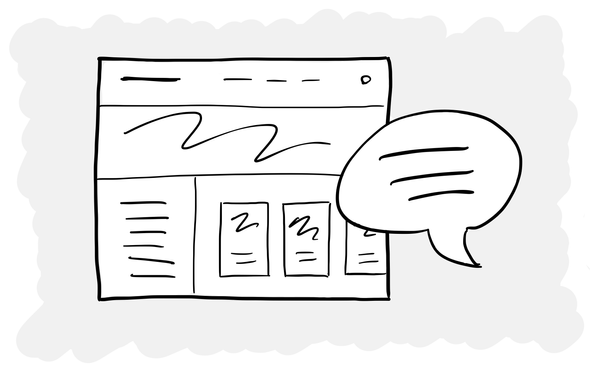Using AI to write more realistic prototype copy

I recently finished a project where I used AI to write 90% of the copy for my mid-fidelity concepts and prototype.
In the ‘olden days’ of 2 years ago, you’d have to write all of the copy in your designs yourself, or resort to lorem ipsum. But what if there was a better way?
The problem with writing copy yourself
Typically a product/UX designer is the first person who writes the copy in a concept or design.
Content designers/UX writers don’t always get involved in the early stages of design work (although they should!)
This is a pain because:
- It’s time-consuming: Writing copy manually takes time, especially when you're not a deep subject matter expert.
- The alternative (lorem ipsum) is unrealistic: Content makes up a big part of many experiences, so when people see this in research, they find it confusing and can’t give good feedback on your design work.
Using AI as your copywriter
In my project, I used AI to generate copy for my mid-fidelity concepts. Just to be clear, this was throwaway copy for research, rather than what would go into production.
Using AI rather than writing it myself meant I was able to:
- Speed up the process: I could create and iterate the concepts much faster.
- Write in their tone of voice: You can give AI the tone of voice guidelines or sample copy so that it can do a decent job of sounding on-brand.
I think this is most useful when you have large amounts of text in your designs, rather than small pieces of UI copy.
Making your data realistic
The other thing that AI can help designers with is making sure that prototypes have realistic scenarios shown in them.
I’ve seen so many prototypes that have unrealistic data because the designer isn’t an expert in the subject matter or they didn’t have the time to really think about the content/data they’re showing.
In this project, I was designing a recommendation engine. With AI, I was able to create realistic recommendations without having to spend weeks becoming a deep subject matter expert.
An example prompt
Imagine that we’re designing a product wizard for the John Deere website. You tell it what you need and it suggests suitable products, using a gen-AI explanation to make the recommendation more personalised.
Without deep expertise in agricultural machinery, you might struggle to write realistic copy for your prototype. This is where we can get AI to help us. Let’s imagine we’re working on the last step of the product wizard, which provides the recommendation:
Write realistic product recommendations
Act as a digital marketing copywriter specialising in agricultural machinery, with over 20 years of experience.
Imagine a John Deere customer who runs a mid-sized dairy farm is interested in purchasing a new tractor to improve their feed management. Specifically, they want equipment that can manage precise feeding schedules, ensure balanced nutrition for their herd, reduce feed waste, and streamline feed mixing and delivery processes.
Recommend 3 suitable John Deere products for this scenario. For each recommendation, write:
- Product name
- What it is: (brief description of the product)
- How it works: (explain briefly the key functionality)
- How it helps: (directly connect the product's capabilities to the farmer’s stated needs)
- Why we’ve recommended it for you: (highlight why this product is particularly suitable for a dairy farmer focused on feed management)
- Price in USD
- A link to the product on the John Deere website, where I can validate the information you have given me.
Finally, make a recommendation of which of the three options is most suitable and explain your reasoning, referencing the customer’s input.
This will give you much more realistic copy for your prototype than lorem ipsum, and will take you a lot less time than if you had to do the necessary research yourself (of course you still need to find a way to check the output).
Final thought
While AI isn't a replacement for professional UX writers/content designers, it can make a big difference to how fast you can create and iterate early stage concepts and designs.





